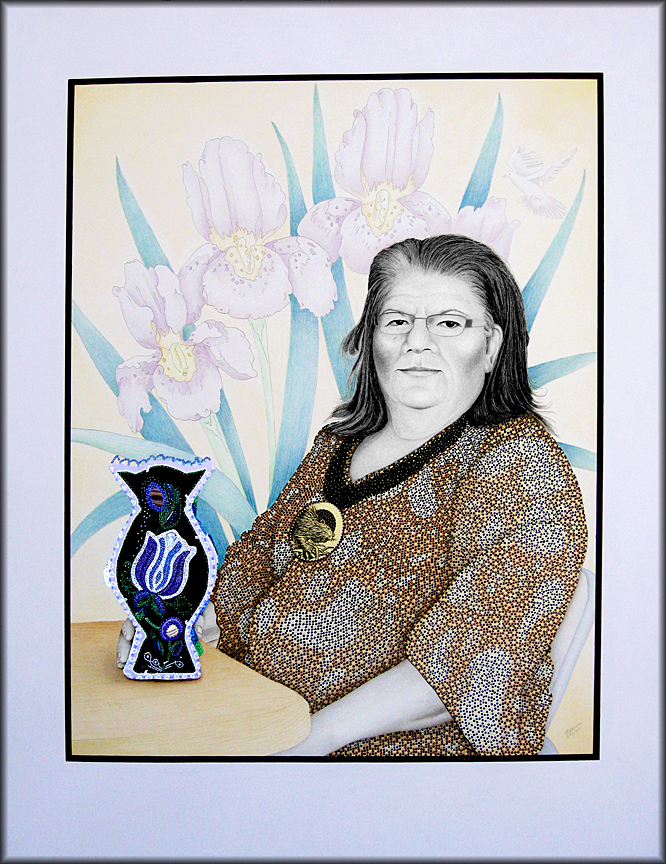Among the Tuscarora there are many beadworkers, or sewers as some prefer to call themselves, who are active today.
Notable among them are Dolly Printup Winden, Mary Annette Clause, Grant Jonathan, Bryan Printup and Rosemary Rickard Hill. Rosemary grew up on the Tuscarora Reservation. As a child she learned to do beadwork at her mother’s side and they often sold their creations at the State Fair in Syracuse, and at Prospect Park, in Niagara Falls. Some of the first items she remembers making were beaded wirework turtles, jitterbugs and bracelets, made from old costume jewelry purchased in second hand stores and at yard sales. By the time she was seven, her mother was teaching her the flat beading technique. Rosemary says that “about the time I was ten, I was learning to do raised beadwork with my mother Margaret Rickard, and
my great aunt Gertrude Chew. I was also their pincushion stuffer and with a five gallon pail of sawdust between my knees and wooden sticks in my hands, all smooth and shinning from packing the sawdust into the corners and rounds of the pincushions,
I learned from them.”
By the age of twelve she was making small picture frames, pincushions, horseshoes, slippers and children’s moccasins that were based on traditional patterns handed down through generations of her family. She continued beading into her early twenties but then she says “I put it down to have a family.” After her children were grown and off on their own, Rosie went to work for a spell but when her employment was terminated, she started doing beadwork again and sold her work in Prospect Park. After the death of her daughter she spent more time refining her craft. “After a bout with a rare form of cancer, I started sewing with other women from Tuscarora,” and her beadwork evolved. “I developed my own style, based on my family’s beading techniques and traditions. The women I sewed with, and their families, were part of my healing process – it was a form of rebirth,” she says.
Not long afterwards she was asked to produce a number of major pieces for the upcoming Across Borders: Beadwork in Iroquois Life exhibit that toured several major museums in the northeast, and she was one of their featured artists. After that she started entering competitions and received numerous blue ribbons and other prestigious awards for her exceptional beadwork. Her work has been exhibited at the Smithsonian in Washington, DC, the British Museum, the Museum of Modern Art in New York and the National Museum of the American Indian to name just a few, and she exhibits annually at the Indian Market in Santa Fe, New Mexico and at other important venues. “It’s as though my mother and aunts had been there to give me a helping hand,” says Rosie, “but there was a sadness too because they were no longer here to see their beautiful Tuscarora raised beadwork in full bloom once again.”
Rosemary says she will continue to carry on the traditional arts of her people as long as her eyes and hands will let her.
